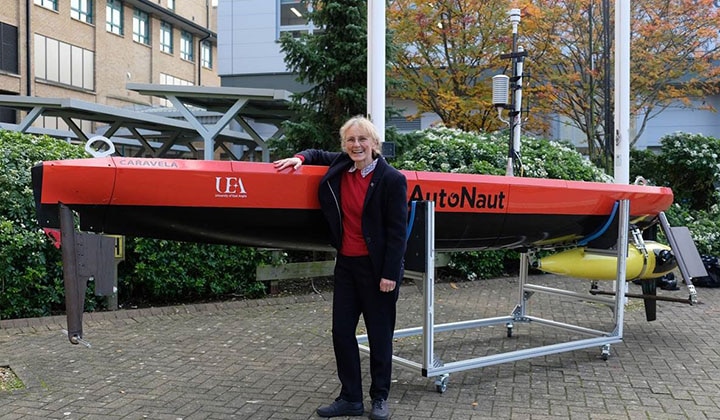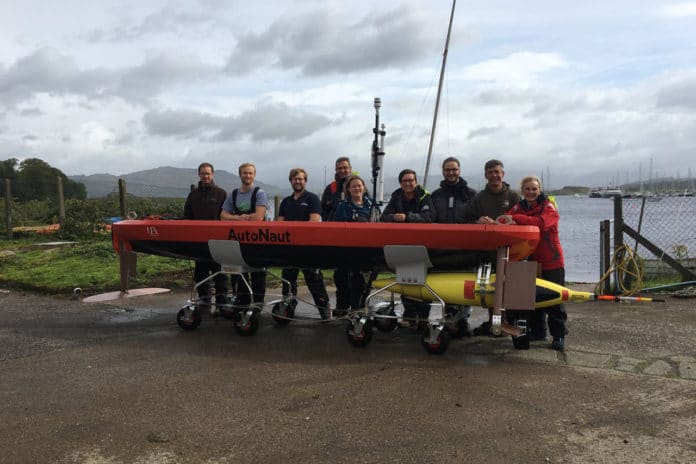The use of Autonomous Underwater Vehicles (AUV) is very helpful to perform oceanographic data collection easier, but sometimes troublesome enough to launch the device. Normally, an automatic underwater vehicle has to be deployed from ships, which needs to burn fuel, has a risk of hazardous weather conditions, and adds some other costs when traveling to the point of deployment.
To fight with this problem, the team of researchers from the University of East Anglia (UEA) has recently modified the existing unmanned surface vehicle, AutoNaut, to carry and release an underwater Seaglider.

The AutoNaut is the same size as a small human diver (five-meter long) and can be deployed from a beach or a ship, and it can wait in position until the Seaglider is ready to be released by remote pilots. The new system, named ‘Caravela,’ carries a range of solar-powered sensors for meteorology and/or oceanography, including atmospheric pressure, air temperature and humidity, wind speed and sea surface temperature.
Basically, Caravela utilizes the rise and fall of the waves and turns them into propulsion thrust. It can reach depths of 1000 meters and travel the ocean by itself for months, covering thousands of kilometers. Powered by solar panels, the system is also designed to withstand heavy seas, is self-righting, and piloted using satellite communication.
Caravela will be tested this month in the Atlantic Ocean, off the coast of Barbados. The team will use combined Caravela and glider measurements to understand how the ocean temperatures affect the layer of air above, and how the winds and sunshine affect the top tens of meters of the ocean.
“We can now send a Seaglider into the middle of an ocean basin without having to use a ship, and where it is too dangerous to send one,” said Prof Karen Heywood, who came up with the idea of having a robot that could deploy the Seaglider. “This means we can reserve the glider battery for the science, so it will have longer endurance. It also gives us the ability to more accurately decide when to release the glider, for example, ahead of the spring bloom or an extreme weather event.”
